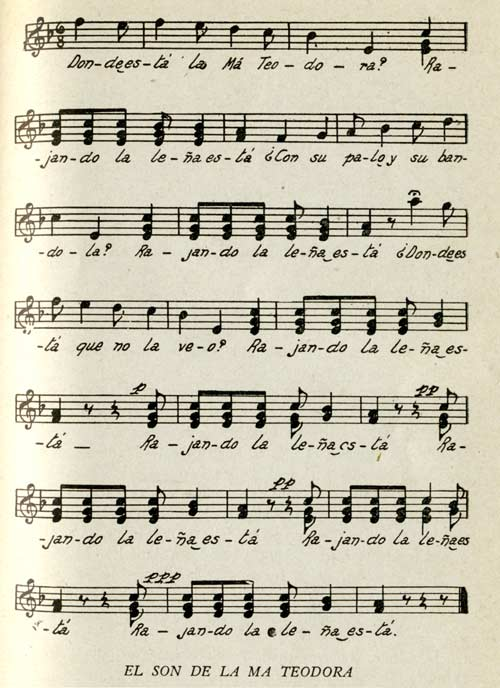4.3 Cuban popular music in the 16th century

The Romance:
Romances arrived in Cuba in the 16th century via Spain. They are defined as octosyllabic narratives, referring to situations or characters dating back to the Middle Ages. Some were collected in loose sheets or songbooks; others have been passed down through generations through oral tradition.
Ballads are generally used as folk songs by children, as is the case with “Catalina and the Sailor” and “Mambrú.” For better classification, they have been divided according to the themes they address: religious, historical figures, family scenes and tragedies, and humorous. The most common are those with family scenes and tragedies, while humorous ones are the least common.
From very early on, the romance was sung in Cuba and its mark is very strong and intense in the songs of white peasants, as Alejo Carpentier stated: “…Cuba is one of the countries in America that has best preserved the tradition of the romance.”1
Musical composition: Son de la Ma` Teodora:
Son de la Ma’ Teodora is the only musical composition that can give us an idea of what Cuban popular music was like in the 16th century. It was composed by Teodora Ginés, a free black woman known as Ma’ Teodora, who was famous for her songs. This work has been considered a sudden and categorical affirmation of a distinctive Cuban sound that has survived to this day.
According to Carpentier: “It is simply a copy of an Extremaduran romance, whose melody has been slightly modified by popular intonation habits (in the eighth measure, for example), separating the incisos by a rhythmic refrain, strummed over the strings of the bandola (or bandora, or mandola). The lyrics conform to the classic octosyllable of the romance…”2
1 Carpentier. Music in Cuba, page 22.
2 Carpentier. Music in Cuba, pages 29 and 30.








